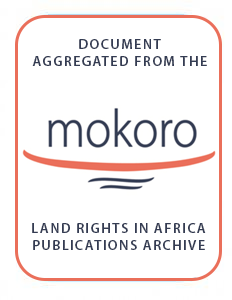Location
An occasional blog largely written by Ian Scoones who is a research fellow at the Institute of Development Studies.
Resources
Displaying 1 - 5 of 10Zimbabwe’s land reform compensation deal agreed at last
An agreement between the Zimbabwean Government and the Commercial Farmers Union on compensation for land taken from white farmers was finally agreed on 29 July 2020;20 years after the land reform programme began. There had been previous attempts;but the science of asset valuation is far from exact. The issue had blocked international recognition of the Zimbabwean Government. Looks at the detractors and sceptics and asks how the agreed sum of US$3.5 billion will be paid for. Believes this is an immensely important step in a long-running and frustrating saga.
Reconfiguring rural authority after land reform
Explores the reconfiguration of rural authority in the aftermath of Zimbabwe’s Fast Track Land Reform Programme, particularly the way chiefs were able to deploy ancestral autochthony as a way of contesting state hegemony. Argues that chiefs cannot simply be viewed as undemocratic remnants of colonial rule; instead, a nuanced understanding of their role in rural governance is required.
Settling the land compensation issue is vital for Zimbabwe’s economy
One of the new government’s major policy priorities has to be to get agriculture moving as a motor of growth. The long-running issue of outstanding compensation payments has meant that international donors and financiers have not engaged with land reform areas, missing out on supporting major development opportunities. People on the resettlement farms are producing significant quantities of food and other agricultural products. Recent figures make it clear how vital they are to Zimbabwe’s struggling economy. So quick resolution of the compensation issue is essential.
Zimbabwe urgently needs a new land administration system
Zimbabwe today has an agrarian structure made up of small, medium and large farms, all under different forms of land ownership. A landscape once dominated by 4,500 large-scale commercial farmers is now populated by about 145,000 smallholder households, occupying 4.1 million hectares, and around 23,000 medium-scale farmers on 3.5 million hectares. Knowing exactly who has land and where is difficult. Illegal multiple allocations combine with unclear boundary demarcations and an incomplete recording system.
Ten priorities for getting agriculture moving in Zimbabwe
Drawing on 18 years of research, offers these 10 priorities for getting agriculture moving again: land tenure, finance, partnerships, government loans, access to marketing, value addition, smart support systems, irrigation, mechanisation, local economic development.



